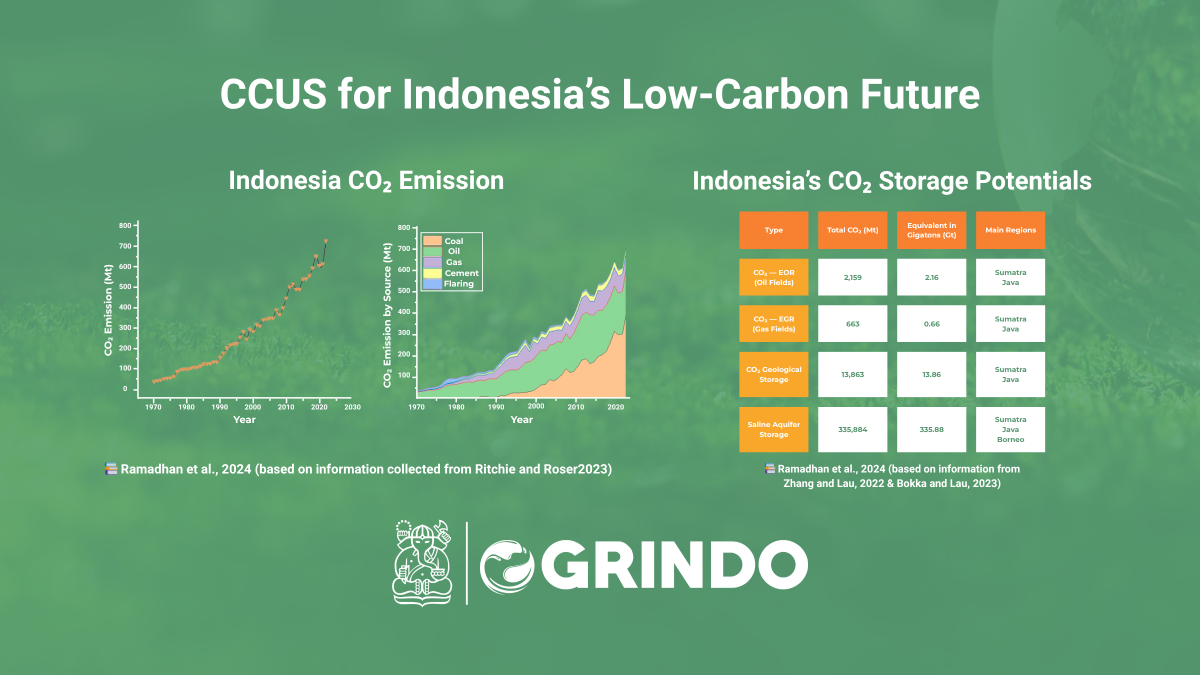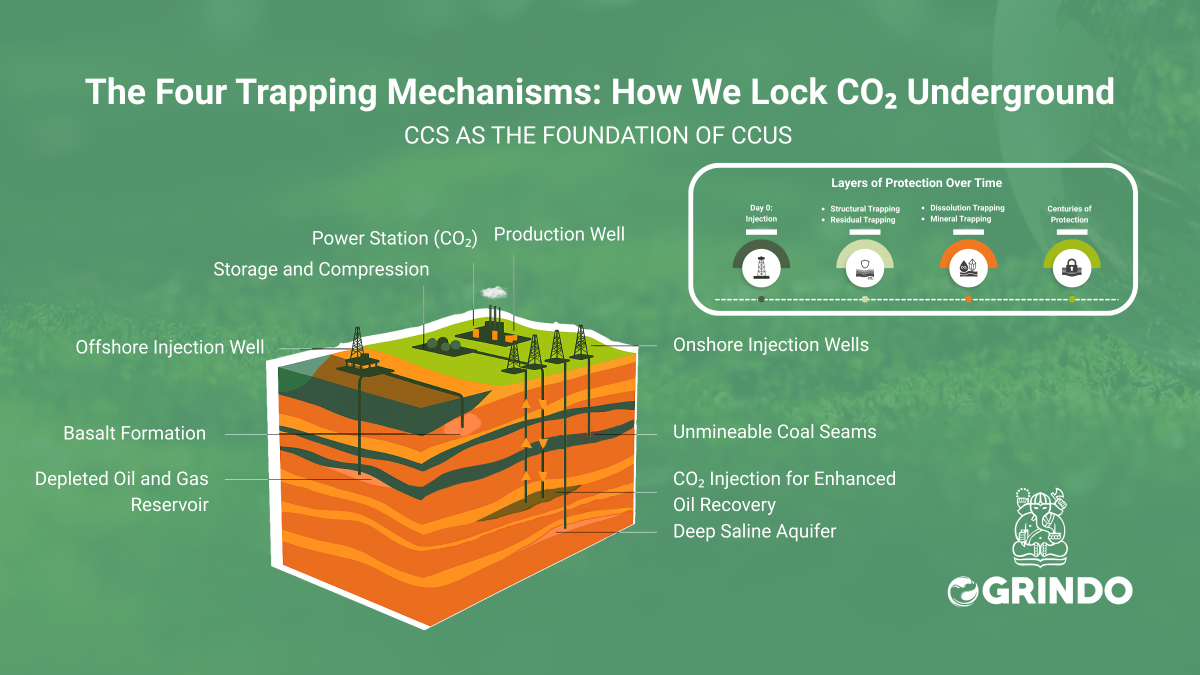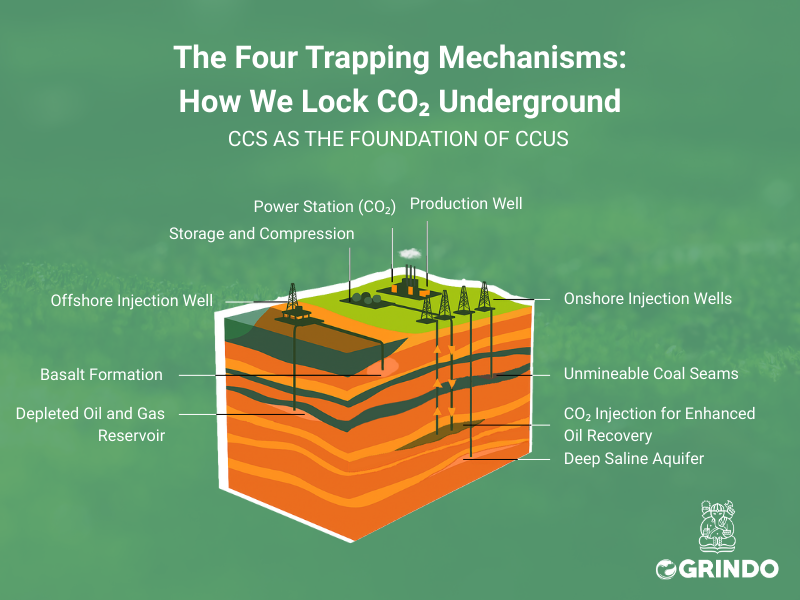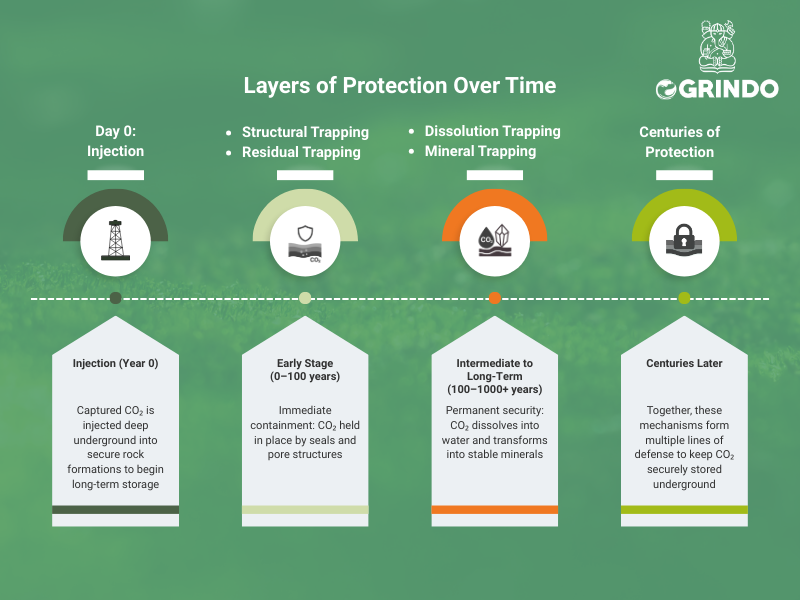Indonesia is currently at a crucial stage in its journey toward a low-carbon energy future. As energy demand continues to rise and global pressure to reduce emissions intensifies, Carbon Capture, Utilization, and Storage (CCUS) technology emerges as one of the most strategic solutions to maintain the balance between energy security and environmental sustainability.
Indonesia’s CO₂ Emission Profile
As one of the most populous countries in the world, Indonesia contributes significantly to global carbon emissions. Recent data show that Indonesia’s carbon dioxide (CO₂) emissions have sharply increased from 35.8 million tons (Mt) in 1970 to approximately 729 million tons (Mt) in 2022. This surge is mainly driven by the dominance of fossil fuels—such as coal, oil, and natural gas—in the national energy mix.
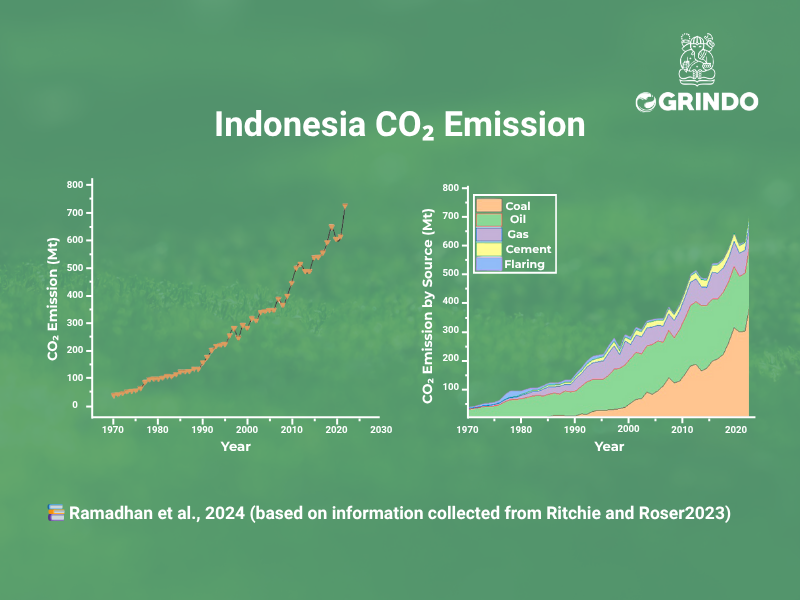
Rapid economic and population growth accelerate the increase in energy demand, while the use of renewable energy remains relatively low. This condition underlines the urgency for Indonesia to adopt emission reduction technologies such as CCUS to achieve the Net Zero Emission 2060 target.
The technology of CCUS offers a concrete solution: capturing carbon emissions directly from their sources (such as factories, refineries, or power plants) and safely storing them underground to prevent their return to the atmosphere.
Potential CO₂ Storage Sites in Indonesia
According to Ramadhan et al. (2024) in Energy Geoscience, Indonesia possesses gigaton-scale carbon storage capacity—one of the largest in Southeast Asia. This potential is distributed across several major geological formations:
- Depleted Oil & Gas Reservoirs
Mature oil and gas fields offer great potential for Enhanced Oil/Gas Recovery (EOR/EGR) while serving as CO₂ storage sites. Total capacity: approximately 2,822 MtCO₂ (≈ 2.82 GtCO₂). Main locations: Sumatra and Java. - Saline Aquifers
Underground saline aquifer formations provide the largest storage capacity. Total capacity: 335,884 MtCO₂ (≈ 335.8 GtCO₂). Main locations: Sumatra, Java, and Kalimantan (Borneo). - Geological Storage Zones
Areas with porous rock layers, such as sandstone and limestone, also have potential for long-term, safe, and stable carbon storage. Total capacity: 13,863 MtCO₂ (≈ 13.86 GtCO₂). Most located in Sumatra and Java.
With a total potential exceeding 350 GtCO₂, Indonesia holds a tremendous opportunity to become a carbon storage hub in the Asian region.
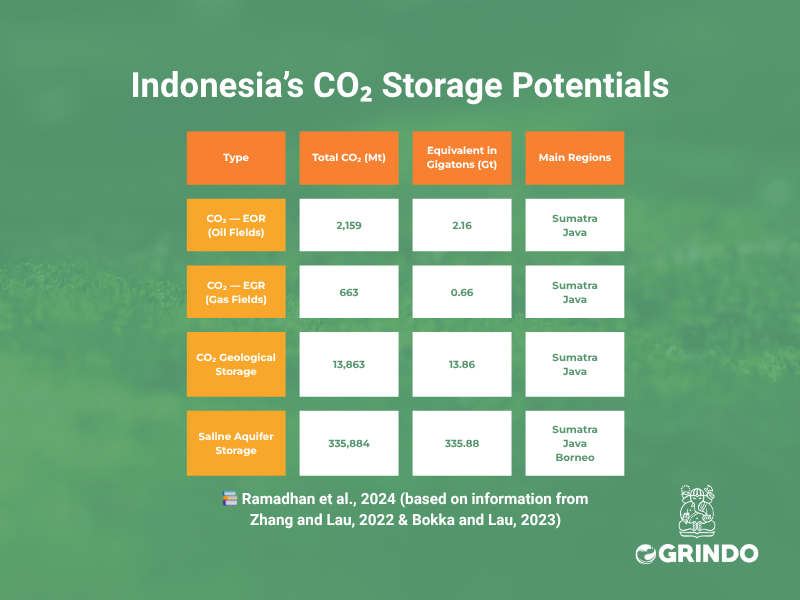
Map of CCUS Project Development in Indonesia
Currently, various CCUS projects have been developed and are being implemented across Indonesia, including:
- Tangguh CCUS (West Papua) – Target operation 2026
- Sakakemang CCS (South Sumatra) – Target operation 2028
- Central Sumatra Basin CCUS Hub – Target operation 2028
- Kutai Basin and Sunda Asri CCUS Hubs (Kalimantan & Java) – Target operation 2029
- Ramba EOR (South Sumatra) – Target operation 2030
These initiatives demonstrate Indonesia’s strong commitment to integrating research, technology, and industry in reducing national carbon emissions.
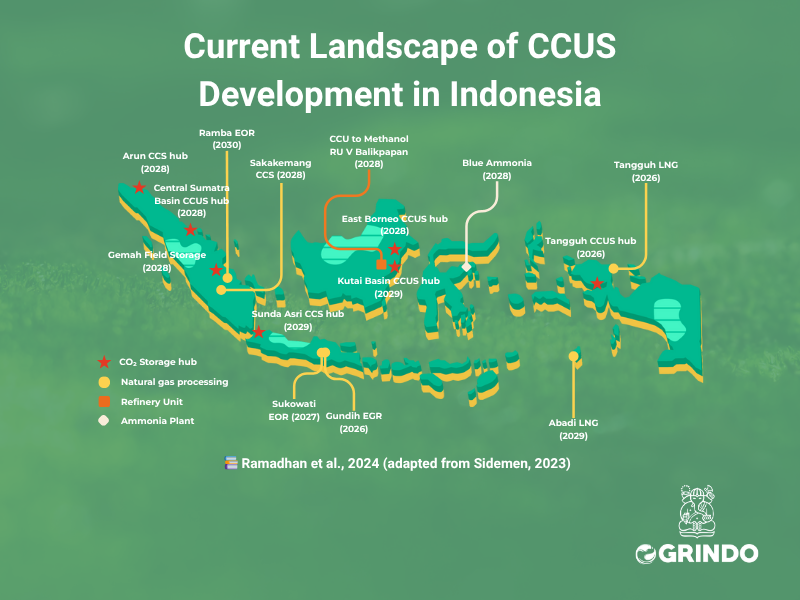
Why CCUS Matters for Indonesia
Climate change has become a real global challenge, and Indonesia stands at the forefront of efforts to reduce carbon emissions without compromising economic growth. Amid the growing energy demand and dependence on fossil fuels, Carbon Capture, Utilization, and Storage (CCUS) technology serves as a strategic solution that bridges the transition toward clean and sustainable energy.
Through the implementation of CCUS, Indonesia can gain several key benefits that directly impact the energy, industrial, and environmental sectors, including:
- Significantly reducing carbon emissions from heavy industry and energy sectors.
- Maintaining national industrial competitiveness amid global carbon policies and regulations.
- Extending the lifespan of national oil and gas assets through CO₂-based Enhanced Oil Recovery (EOR) projects.
- Attracting investment and technology transfer in clean energy and low-carbon innovation.
- Supporting the Net Zero Emission 2060target while opening new opportunities for a green economy.
With its rich geology and technical expertise in the energy sector, Indonesia has a strong foundation to lead CCUS implementation in Asia—becoming a bridge between academic research, technology, and real-world industrial application.
Conclusion
The technology of Carbon Capture, Utilization, and Storage (CCUS) is not merely a concept of the future but a real solution that has already begun implementation in various regions across Indonesia. The deployment of CCUS will be the key to transitioning toward a low-carbon economy, while strengthening Indonesia’s position as a leader in sustainable energy in Southeast Asia.
To achieve this, cross-sector collaboration—among government, industry, and research institutions such as OGRINDO ITB—will be a critical success factor.
📩 Let’s Collaborate!
For research collaboration, industrial partnership, or further information about CCUS innovation, contact us via email: info@ogrindoitb.com
📚 References:
- Ramadhan, R., Mon, M. T., Tangparitkul, S., Tansuchat, R., & Agustin, D. A. (2024). Carbon Capture, Utilization, and Storage in Indonesia: An Update on Storage Capacity, Current Status, Economic Viability, and Policy. Energy Geoscience, Vol. 5, 100335.
- Ritchie, H., & Roser, M. (2023). CO₂ and Greenhouse Gas Emissions. Our World in Data.
- Zhang, L., & Lau, H. (2022). Carbon Storage Assessment in Southeast Asia. Energy Reports, 8, 1250–1265.
- Bokka, S., & Lau, H. (2023). Economic Feasibility of Carbon Capture, Utilization, and Storage (CCUS) in Developing Economies. International Journal of Greenhouse Gas Control, 127, 103765.
- Sidemen. (2023). Current Landscape of CCUS Development in Indonesia.


